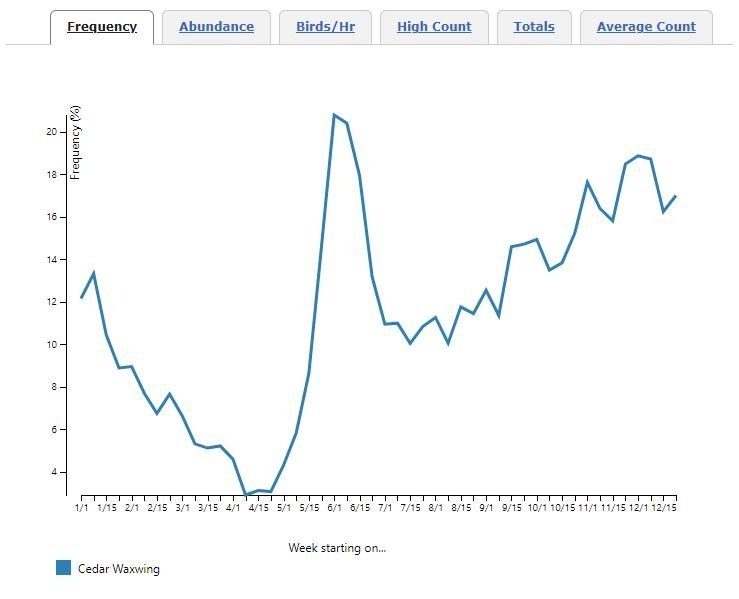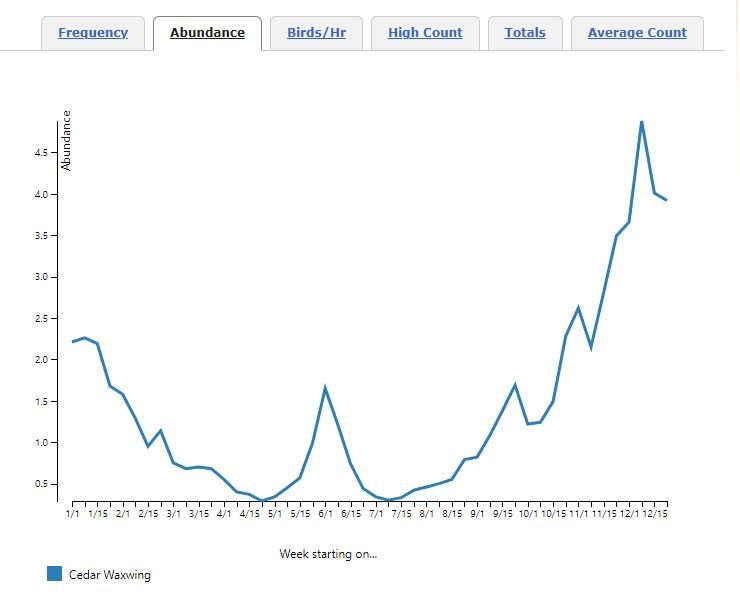Cedar Waxwings in the Boise Area
By GEAS Guest Blogger Terry Rich
Every year, I’m a bit surprised by the pattern of Cedar Waxwing occurrence around Boise. We’re used to seeing flocks of various sizes over the winter months. Total numbers can vary quite a bit from year to year, but the pattern of appearance over the months seems consistent. The surprise for me is that they seem to sort of disappear in late winter and early spring. They then make a good rebound in late May and early June. That’s my impression, but let’s look at the data.
According to the Birds of Idaho Field Checklist, this species is a common (but sometimes difficult to find) resident statewide. I’ve always found that qualification to be an interesting one, no matter the species. It seems that a species is either common or not. But I’ll cut the authors some slack because trying to capture abundance, along with temporal and spatial patterns of abundance, in a word or two is basically not possible.
Cedar Waxwing by Mary Miller Rumple
eBird Bar Charts Track Frequency and Abundance
My go-to location for patterns of abundance is the bar chart option in eBird (Explore, Bar Charts). I chose Idaho and then the “counties in Idaho” option where I selected Ada and Canyon. You then click on the little graph icon to the right of “Cedar Waxwing.”
Turns out my impression of their occurrence is confirmed by the frequency data (on the left below). Cedar Waxwings dip all the way to zero in the first week of April. That’s the only time of year occurrence hits zero. Another useful view is to check the “abundance” option (on the right below). This shows two interesting peaks. The biggest one is in December, and that’s what gives us the general impression that this species is most common in winter. It truly is.
But the second peak is also interesting. That is on June 1, and it contrasts pretty sharply with near zero counts 5 weeks before that peak and again 5 weeks later. This certainly suggests that the spring bump is comprised of waxwings migrating through SW Idaho on to other locations. These could be higher in elevation, farther north, or both. Or maybe something else.
Cedar Waxwing Frequency and Abundance in Ada and Canyon Counties over the Year
Cedar Waxwing by Terry Rich
More To Be Learned
We can dig much deeper into these data by looking at these patterns in other geographic regions and at different elevations. We could also go to the “Species Maps” option to see exactly where Cedar Waxwings are on any given date. That gets to be a very long blog, so I’ll leave that exploration to you!
You can reach Terry at terryrichbrd@gmail.com



